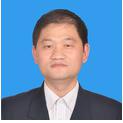题目: Measuring the impact of air pollution on respiratory infection risk in China
报告人:唐三一 陕西师范大学

时间:10月30日下午4:00-5:00
报告人简介:唐三一,教授、博士生导师,从事生物数学和生物信息学研究,提出了一系列重要的建模思想,发展了新的理论分析技巧、模型辨识和数值研究方法。发表SCI论文100多篇,被SCI杂志引用超过1900次,4篇ESI高被引论文,连续三年入选Elsevier 中国"高被引"学者榜单。完成或主持4项国家自然科学(3项面上和1项中美生物医学国际合作)基金,参与1项国家自然科学基金重点项目(第二参与人),研究成果获陕西省自然科学二等奖1项(第一完成人)。三次应邀出席生物数学国际大会并作大会特邀报告,部分研究得到中国日报、加拿大环球邮报、Elesvier出版社等国内外媒体的广泛报道,在公共卫生领域产生了深远的社会影响。2018年入选陕西省科技创新领军人才。
摘要:China is now experiencing major public health challenges caused by air pollution, and there are many challenges to quantify the dynamics of air pollution and its impact on the risk of respiratory infection. This talk we would like to present our recent work on this topic, and to show an integrated data analysis to quantify the association among air quality index (AQI), meteorological variables and respiratory infection risk in Shaanxi province of China in the period of November 15th, 2010 to November 14th, 2016. Our analysis illustrated a statistically significantly positive correlation between the number of influenza-like illness (ILI) cases and AQI, and the respiratory infection risk has increased progressively with increased AQI with a time lag of 0-3 days. We also developed mathematical models (deterministic and stochastic models) for the AQI trend and respiratory infection dynamics, incorporating AQI-dependent incidence and AQI-based behaviour change interventions. Our combined data, model identification and theoretical analysis estimated the basic reproduction number for the respiratory infection during the studying period to be 2.4076, higher than the basic reproduction number of the 2009 pandemic influenza in the same province. Moreover, some novel methods have been developed for the SDE model, and the switching points related to the smog seasons have been estimated. Our modelling-based simulations concluded that, in terms of respiratory infection risk reduction, the persistent control of emission in the China's blue-sky programme is much more effective than substantial social-economic interventions implemented only during the smog days. Finally, I would like to mention that the non-smooth Filippov system could also be used to model the smog season and non-smog season (switching system), and then to analyze its dynamics.